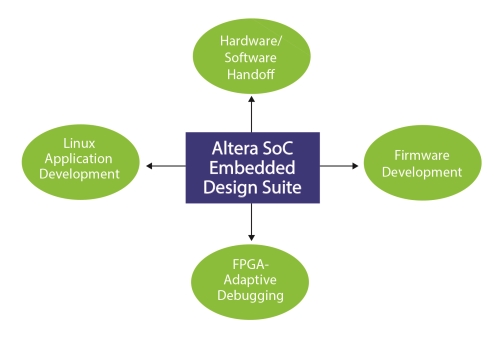By Mouser Electronics, www.mouser.com
The capabilities of programmable logic devices such as field-programmable gate arrays (FPGAs) and complex programmable logic devices (CPLDs) have grown rapidly since they were first introduced decades ago as a replacement for glue logic and as an ASIC prototyping device. As gate density grew, FPGA and CPLD vendors began to add circuits with dedicated functionality to complement their unassigned gates and logic functions. Today, most FPGA and CPLD vendors offer product families that provide a variety of popular MCU cores and other IP cores. Using cores gives system designers access to familiar development tool sets, operating systems, and selectable performance to fit applications that were once considered the exclusive province of DSPs and ASSPs.
There are two kinds of cores – hard and soft. Soft-cores are described by logic function – not physical implementation – and typically consist of HDL code. Altera's Nios II processor is an example of a soft MCU core. Hard cores, as the name implies, have physical implementations. When used with FPGAs and CPLDs, hard cores are usually called embedded cores because they are embedded in the die and surrounded by programmable logic. The new hard processor system (HPS) is a new dual core ARM Cortex-A9 from Altera that not only includes the processor itself, but also a variety of memory and networking interfaces.

Altera Hard Processor System (Image courtesy of Altera)
There are several compelling reasons to consider using FPGAs that include MCU functionality. Most important is to recognize the hidden costs of using a dedicated MCU. For instance, if the part does not have the right mix of features, external logic and software must be developed to fill the functionality hole. These chips are not able to take into account dynamic market conditions that could require a new interface or peripheral. Conversely, some features of the MCU may not be used in a particular application. This increases product cost, which can be critical in cost-sensitive markets.
Embedded MCU implementations neatly address these problems. Developing system-level software on a single chip can shorten the overall software development cycle. Using the FPGA vendor’s tools make it easier to find bugs and identify compatibility issues. If the desired functionality cannot be implemented in software, the requirements for additional hardware support can be recognized sooner rather than later. The chip can be programmed and reprogrammed as needed during the design process to correct flaws or to add new features, enabling more rapid prototyping and fast time-to-market. FPGA and CPLD can also be upgraded in the field if requirements change – even after the devices are deployed in a product.

Integrated Development tools for MCU and FPGA development reduce time to market (Image courtesy of Altera)
Advertisement
Learn more about Mouser Electronics





